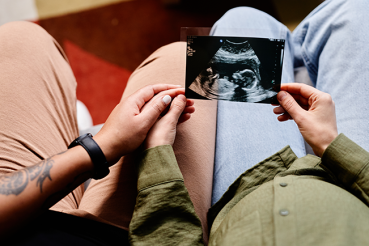The chances — and risks — of mid-life pregnancy
Experiencing pregnancy in your late 30s or early 40s isn't just a Hollywood thing, it's a national trend.
According to census data and statistics compiled by the Pew Research Center, the number of births to women ages 35 and older grew 64 percent between 1990 and 2008, with dramatic increases noted in women 35 to 39 (up 47%) and 40 to 44 (up 80%).
While many women praise the benefits of midlife parenthood — which often include greater financial stability and flexibility with work schedules due to having established careers — conception and pregnancy can prove challenging for older women.
Here are five facts every woman should know about having children later in life.
1. At age 40, your chances of having a healthy pregnancy are still good.
Despite some definite downsides to pregnancy in your late 30s and early 40s (including increased risks of having a miscarriage, a child with a chromosomal disorder, gestational diabetes, preeclampsia and c-sections), the odds of having a healthy pregnancy at age 40 are still in your favor.
Just make sure to get standard screening tests (e.g., pap smears, mammograms) and prenatal care.
2. You may experience challenges getting pregnant.
While it's possible to get pregnant in your 40s, it is significantly more difficult. A woman's fertility dips sharply after 40 due to a depleted egg supply, less frequent ovulation and fewer healthy eggs.
A woman in her mid 30s, for example, has a 75 percent chance of conceiving within a year, while a 40-year-old has a 40 to 50% chance and a 43-year-old woman has only a 1 to 2% chance of conceiving.
Also realize that your partner, regardless of age, might be the one with fertility issues, health experts attribute one-third of fertility problems to men.
3. When it comes to conceiving, older women have options.
Older women wanting to have children have more options today than ever before. If conceiving naturally isn't possible, women can pursue assistive reproductive technologies, such as in vitro fertilization, or IVF, and the use of donor eggs.
Donor eggs have a live birth rate of 50 percent. As for risks of miscarriage and chromosomal problems with donor eggs, those risks relate to the age of the donor, not the recipient. So if your donor is in her 20s or early 30s, the risks are relatively low.
Older women wanting to have children have more options today than ever before. If conceiving naturally isn't possible, women can pursue assistive reproductive technologies, such as in vitro fertilization, or IVF, and the use of donor eggs.
4. Plan ahead: See a doctor before you try to conceive.
Women in their late 30s and early 40s should see their doctors regularly before they even start trying to get pregnant. A primary care doctor can help address any undiagnosed or untreated health conditions that could prove problematic during pregnancy, such as high blood pressure and diabetes.
They can also advise you on how to prepare your body for a pregnancy, such as taking daily doses of folic acid, and discuss any issues related to medication use and pregnancy. Primary care doctors may also test your hormone levels, which can provide insights regarding fertility.
5. There are benefits to being an older mom.
While the statistics can be disheartening for older women considering pregnancy, research related to older moms and their "mom skills" is quite positive.
For example, older moms make healthier nutritional choices for their babies, according to a study published by the Journal of the American Dietetic Association. This includes breastfeeding their children, which provides babies with powerful antibodies that help prevent illnesses.
In addition to addressing the physical challenges of conceiving and giving birth later in life, high-risk obstetricians at Rush help their patients cope with the emotional aspects.
This includes setting realistic expectations about conception, pregnancy and motherhood. To avoid feeling disappointed or depressed when things don't go exactly as expected, patients are encouraged to express their emotions but not focus on what other women have gone through. Every woman is different, and as a result, every woman's experience will be unique.




